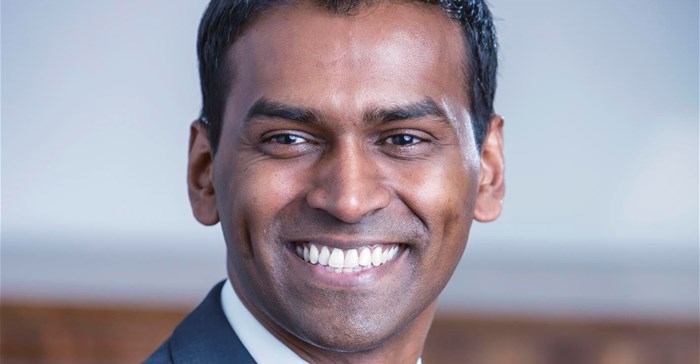Technology in Africa: A guide for the year ahead

Yes, tech is seemingly moving at light-speed as we power into the fourth industrial revolution, but its trajectory is far from unpredictable. After all, technology solutions are always aimed at tackling a problem – and as a species, our problems and priorities haven’t changed all that much for centuries.
Efficiency, speed, equality, an end to suffering, and prosperity – these are the values and priorities that generally drive us forward, as societies, individuals and organisations. And the business tech trends of 2018 are no exception.
While it may not be difficult to predict which way the tech winds are blowing, what is challenging is finding the right moments to act.
This is especially true of African businesses, where the environment is often so different from the United States, Asia, and Europe. It’s important to understand global trends, of course, but hyper-focusing on what’s happening overseas can blind you to revolutions in your own backyard.
With that in mind, I’ve drawn not just from the global experts and industry analysts, but my own understanding of the local continental landscape to build a guide for the year ahead that is specific to Africa.
The human face of AI
We’ve reached a point in AI development where robots can beat you at chess and Go. But the real interesting work in the machine learning realm isn’t around the processing power, but rather, the intersection of human and artificial intelligence, where people interact with, well, not-people.
Forget chatbots. There hasn’t been a user experience interface devised yet that can simulate the complex emotional and linguistic intricacy of human to human interaction – but 2018 might be the year all that changes.
Consumers’ need for more real-time services and the tempting possibilities of using technology in classically “human to human” scenarios means that refining the conversational and emotional side of AI will be a strong focus in the coming year. The exciting part, however, isn’t that more realistic AI-driven conversations are taking place (though that’s rather impressive, too). It’s the AI working behind the scenes that is really stealing the show - not AI that purports to be more human, but AI that enables us to become more human.
Imagine if a poor, under-resourced cancer patient living in Africa suddenly had access to the world’s finest oncologists. Imagine if AIs trawling billions of social media posts could accurately identify those most at risk of suicide and reach out to them proactively.
These things are already happening. And of course, futurists like Elon Musk have already started working on the ultimate goal of human machine interfaces – the seamless connection of mind and machine, which promises to completely revolutionise the way we interact with technology and, consequently, each other.
In both the business and humanitarian contexts, AI in 2018 will be less concerned with passing the Turing Test, and more about making sure that human beings are equipped to handle the varieties of culture, language, and life experiences of the citizens on planet Earth.
Pushing automation to the tipping point
Times are tough for African economies. Thankfully, automation holds the potential to relieve much of the financial burden for businesses and governments alike. 2018 will be a year of even more organisations realising the cost-cutting and streamlining benefits of process automation, particularly on the repetitive and time-consuming tasks becoming all-too-familiar in increasingly digital work environments.
Today’s customer exists in an always-on world, and expects an always-on, omni-channel customer experience. Last year saw the Department of Home Affairs make incredible leaps in reducing its notorious bureaucratic backlogs through automation.
Meanwhile, in retail, Pick ‘n Pay is piloting a somewhat controversial self-service checkout project. Expect to see more large-scale projects of this sort in the coming year, with the current state of the economy creating a bigger need for competitive advantage and cost-cutting measures among businesses across every sector.
With more businesses than ever realising automation isn’t just a future innovation, but a critical part of any organisation, it’s time for the workforce to begin bot-proofing.
Unemployment need not necessarily be on the horizon. With the World Economic Forum predicting that 65% of children entering primary school today will end up working in jobs that do not yet exist, it’s an excellent time for South Africa to start investing in education around keeping AI systems running.
It’s the end of the app as we know it
As of December 2017, Statista reports that the Google Play Store boasts a total of around 3.5 million applications available, with Apple’s App Store currently at 2.2 million. These are huge numbers, but the figures are not particularly surprising. Here’s something that is, though: what was once thought of as a literally limitless way of delivering specialised chunks of functionality to consumers is facing some resistance thanks to an array of platforms that make your stock-standard app dated in comparison. The human, physical world is fighting back, and so-called “phygital” experiences will continue their rise in 2018, especially as the tactile Generation Z increase their buying power.
The app is a channel to the customer - an effective one at that - so why, then, is excitement waning?
Enterprises that invest in an app just to keep up with the corporate equivalent of the Joneses, unfortunately, can only expect their rates of success to diminish in the coming years. An app is simply not a business model. It’s only one aspect of an effective omni-channel strategy, and for a business to maintain relevance, attention must be paid to the sweeping changes affecting the app ecosystem at large.
The apps that will thrive in 2018 are the ones that emphasise their ability to solve a real-world problem – those that connect consumers to solutions and services that can tangibly improve their lives. They build on well-established concepts and delivery models to create a more seamless interaction between the digital and physical worlds, and technologies like AI and artificial or augmented reality are helping them do it.
If businesses focus on using apps to bring problem and solution together, that’s half the battle won. The question they need to ask themselves is: “If my customers only had room for five apps on their phones, would my app be one of them?”
Knowing me – the rise of alternative data
The world we live in is connected and digital, yet remains far from egalitarian. From growing SMEs into prolific employers, to improving access to education and housing, so many of the most desperately needed facets of development depend heavily on access to healthcare, banking, and other financial and social services that should – in theory – be accessible to all.
Unfortunately, Africa is a notorious “thin-file” population, with large sections of unbanked and lacking in credit history. Infrastructural challenges mean that many people are also excluded in the social sense. Millions lack permanent physical addresses, identification documents, and many other essentials needed to take meaningful part in the social economy.
But the classical definition of a “data footprint” is rapidly expanding, granting often life-saving access to critical services that can uplift individuals, businesses, and communities.
In knowing people, businesses, governments and NGOs are granted the ability to do better by them, and new forms of alternative data are presenting exciting new possibilities for exploring their potential to solve problems of financial and social inclusion in an unfair world. Africa, with its lingering rhetoric of colonialism and Apartheid, can benefit greatly from giving the marginalized and disenfranchised the voice they deserve. With something as simple as a permanent address and an identity or social security number, millions across the continent can go from invisible and neglected, to counted and prioritised.
South Africa’s own National Development Plan for 2030 is an ambitious undertaking for which alternative data will be essential. With access to public services for the poorest of the poor as its mantra, how is the government to begin including those citizens who live in deeply rural areas? What about those without Internet connections, or even electricity and running water? Unique ways of finding, and quantifying such populations are what alternative data does best.
The key might lie in drawing insights from places nobody has thought to look before.
Customer experience gets up close and personal
New technologies have completely overhauled the way that Generation Y, Z and beyond consume marketing. But with hyper-personalised, proactive marketing experiences taking centre stage, traditional psychographic and ethnographic research is often not enough to deliver new, meaningful experiences.
As IoT connectivity increases and more sensors collect more data from more people, there are rich ecosystems of unstructured data from which to design new experiences, products, and services. Imagine being able to monitor your customer’s emotions as they happen – right down to capturing the goosebumps on their skin. That has the potential to transform anything from retail to healthcare to productivity.
And if anything can hold a sensor, anything can be used as a source of data to understand the subject at hand – and offer insights to create immersive, multisensory experiences. The question for South African businesses isn’t just ‘are you beefing up your IT skills?’, but rather, ‘are you hiring and empowering the right creatives, data experts and strategists to make sense of the vast variety and volume of data that’s already out there?’
Of course, all of the above is just the tip of the iceberg in terms of the exciting new developments taking place every day.

































